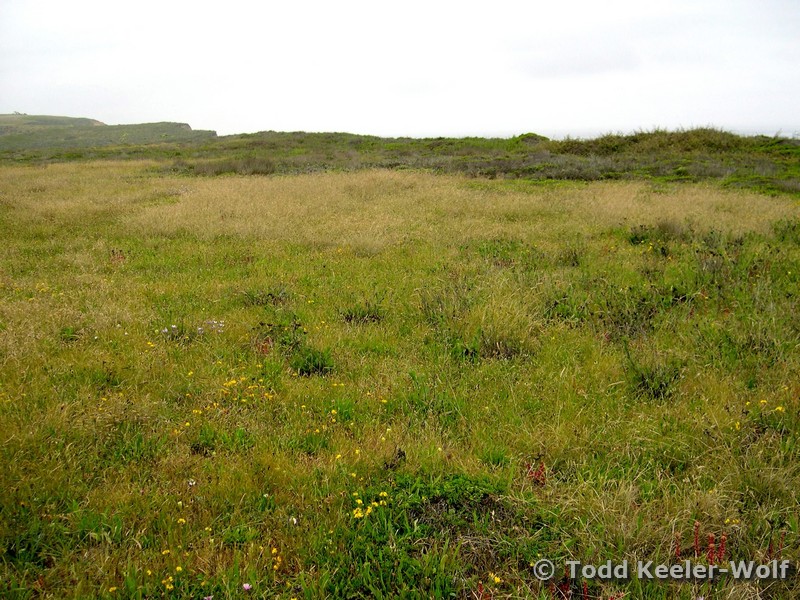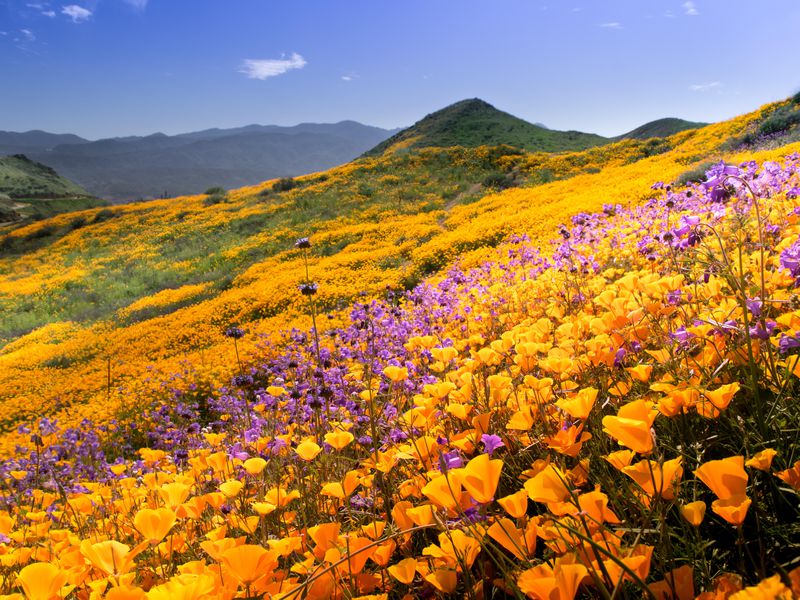Most of California's grasslands today are dominated by introduced annual grasses.
Most originated in the Mediterranean region. There are also many non-native forbs that inhabit California's grasslands and disturbed areas.

There is some debate about what these systems looked like before European contact. They may have been dominated by perennial bunchgrasses, or they many have been dominated by wildflowers.


In years with good spring rainfall, California often experiences prolific wildflower blooms. This may be what more of California looked like before the introduction of the non-native annual grass species.
The introduced annual grasses tend to germinate early in the winter and compete strongly for soil water as the seasonal drought develops through the spring. They cause the top 30-100 cm of soil to dry out very quickly. This often prevents other plant species from establishing or surviving.